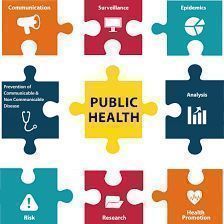
Lazio Region – Transplants by 15% increased donors grew
Lazio Region – Transplants by 15%increased, donors grew
During 2014 i transplants carried out in regional centers increased by 15% compared to 2013 from 317 to 366 interventions. While the number of donors has gone from 14.5 per million inhabitants at 19.7, with an increase of 5 points. Pediatric transplants were 10 more than in 2013.
These are record numbers that reward the unique Lazio Trasplant model in Italy, and which coordinates in a single system 4 organ transplant centers for adult patients active at the Umberto I Polyclinic, Gemelli, Tor Vergata and S. Camillo –spallanzani.
This network also provides its business in the extregial field being a point of reference also for the Regions Umbria, Calabria, Basilicata and Abruzzo. In particular, in 2014 163 Rene transplants were carried out, 117 of liver, 26 of heart, 7 of lung, and 9 combined (of which 1 kidney-pancreas and 7 of liver-privals, 1 heart lung). The pediatric transplants were 42, 10 more than 2013, of these 15 were of kidney, 13 liver, 10 of heart, 4 combined. From living donor the transplants were 26 of kidney and liver.
For the regions connected instead, the transplants were 10 (8 of liver and 2 of kidney). There are 1 patients waiting for an organ in Lazio.040 of which 867 for kidney, 95 liver. Twenty-six patients are waiting for a compatible heart, 71 for a lung, 2 for a pancreas.
The management of waiting lists in the circuit of Lazio Transplant it is managed by the Regional Transplant Center which also carries out organ compatibility analyses. All infectious disease investigations are performed at Spallanzani. The Lazio Trasplant model also counts on an innovative regional organ harvesting service for adults which is ensured on a rotation basis by two different surgical teams that carry out intra- and extra-regional harvests.
“These numbers give hope to all citizens of Lazio– says the President of the Region Nicola Zingaretti – the system is recovering from its historical ills. There is much to be done, but the great professionalism present in the hospitals of Lazio allows us to believe that the health system can be brought out of the corner of the last of the class where it has been relegated for too long. We are succeeding and thanks above all to the doctors to the nurses of the Lazio Trasplant hospitals as well as to the excellent coordination work carried out by the Regional Transplant Center.
On this occasion I want to address a grateful thought to the work of Professor Domenico Adorno who for years has coordinated the transplant center and who left us in recent months. These results are also the result of his work “.

